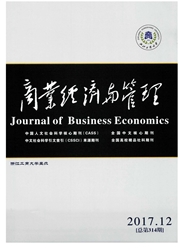

 中文摘要:
中文摘要:
未被观测经济(NOE)对经济发展具有诸多影响,但对居民收入不平等的影响尚未引起足够重视。文章基于动态均衡解的劳动报酬模型得到,随着NOE规模扩大,收入不平等程度(即劳动者从事NOE部门的报酬与从事可观测部门的报酬之差)呈现单调递增的变化过程,但边际变化率先增后减。当考虑劳动者决策的随机动态调整因素时,NOE规模与收入不平等之间存在高低两个动态变化均衡点。在该模型基础上,基于2000-2010年中国省级面板数据,证实了NOE规模与居民收入不平等之间存在显著正向影响关系,人力资本水平、市场化程度和腐败水平也与居民收入不平等呈正向影响关系,而城市化水平则呈较显著的负向影响关系。基于实证结果,提出了相关的政策建议,并对未来研究方向进行展望。
 英文摘要:
英文摘要:
Non-observed economy (NOE) has many effects on economic growth, but the impact on income inequality has not aroused much attention. Based on the labor remuneration model of dynamic equilibrium solution, this paper holds: with the expansion of NOE size, the relative wage of NOE sector (income inequality) experiences monotonically increasing, but the rate of marginal change firstly increases and then decreases~ When considering the stochastic dynamic adjustment factor of workers' decisions, the size of NOE and income inequality have the high and the low dynamic equilibrium points. The labor remuneration model of NOE sector is supported by the empirical test for Chinese provincial panel data from 2000 to 2010, which shows that the size of NOE has the significant positive effect on income inequality. At the same time, human capital, marketing degree and corruption level have the positive impact on income inequality, and the urbanization level shows significant negative impacts on income inequality. Based on the empirical results, this paper puts forward corresponding policy and directions for future research.
 同期刊论文项目
同期刊论文项目
 同项目期刊论文
同项目期刊论文
 期刊信息
期刊信息
